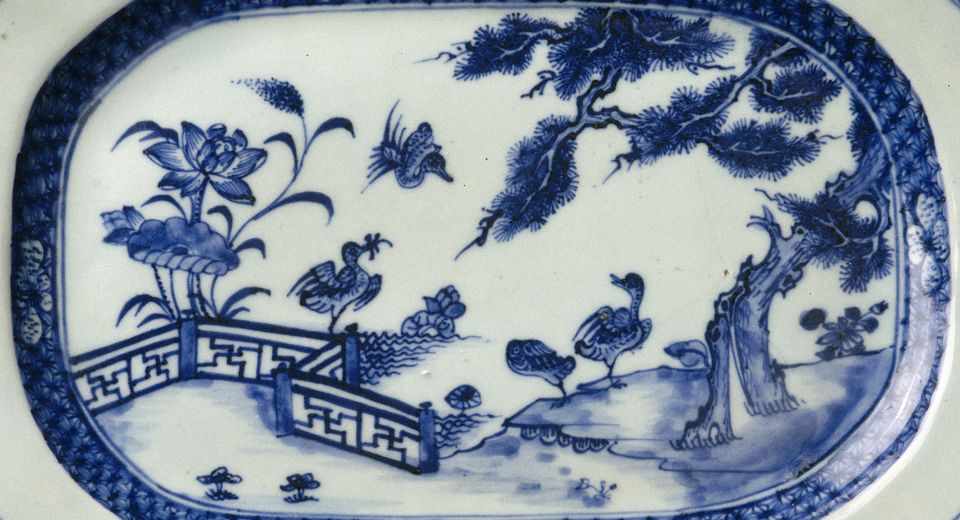Plate with Ducks
Port-Louis
The plate was found during excavations of the Griffin, an English vessel that sank off the Philippines in 1761. Its cargo was mainly composed of Chinese porcelain and cases of tea.
Description
On 31 December 1760, the Griffin, a vessel belonging to England’s East India Company, sailed from Canton to set up an English trading post on Balambangan Island between the Philippines and Malaysia. On 21 January 1761, it hit a reef and sank to a depth of twelve metres northwest of Basilan Island, south of the Philippines.
According to its logbook, the ship’s cargo mainly consisted of spices and tea. Excavation of the wreck uncovered 3,000 cases of tea and 200 cases of porcelain.
The Plate with Ducks exhibited at the National Maritime Museum is typical of the so-called “East India Company” porcelain from the late 18th century. Aquatic landscapes bounded by fences, birds and floral motifs were all recurring subjects developed by Chinese potters and much sought after in the West.
Porcelain
Porcelain first appeared in China early on in the Christian era. It is partly composed of kaolin, a type of clay that keeps its whiteness after firing. As it supports very high temperatures, it can be vitrified, a process that provides it with its translucency.
Chinese craftsmen gradually developed a wide range of colours through the use of iron oxides.
Porcelain production developed in Jingdezhen in southern China, which became the porcelain capital under the Ming dynasty (1368-1644), as kaolin was mined nearby. A brush was used to apply “blue and white” decoration to the medium. Created using cobalt oxide, the design was provided with an unalterable coating and turned blue during firing.
In the 17th and 18th centuries, exports to Europe led to massive production along with standardisation and, during the Renaissance, European ceramists started trying to imitate Chinese porcelain. But in the absence of kaolin, they had to make do with developing a material of similar appearance, bone china.
Collection highlight
The essential works to see during your visit to the Musée national de la Marine in Brest, Port-Louis, Rochefort, Toulon, and soon in Paris.


